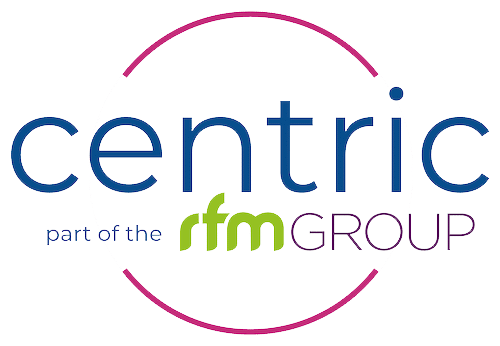In this article, we’ll explore the key aspects of retail fit-out, from design and planning to construction and finishing touches, helping retailers create spaces that captivate customers and drive business growth.
What is a Retail Fit-Out?
A retail fit-out / shopfitting involves customising an empty or existing space to suit a retailer’s specific needs. This can include interior design, layout planning, lighting, furniture, and fixtures, as well as systems like heating, ventilation, air conditioning (HVAC), and electrical installations. Essentially, it’s the process of preparing the shop to be ready for customers, aligning the physical space with the brand’s image.
There are two main types of retail fit-outs:
- Category A Fit-Out: This stage involves basic construction work, such as installing wiring, plumbing, flooring, ceilings, and partitions. The result is a blank space ready for the retailer’s design elements to be added.
- Category B Fit-Out: This phase focuses on the finer details, such as branding, bespoke fittings, interior décor, signage, and any other features that reflect the retailer’s personality.
Key Elements of Retail Fit-Out
Successful retail fit-outs require a balance of practical functionality, aesthetic appeal, and customer psychology. The following are the key components involved:
a. Space Planning and Layout
The store layout is the foundation of a good fit-out. It ensures smooth customer flow, maximises space, and strategically places products in areas where they will receive the most attention. Careful planning of walkways, product zones, and display areas is crucial to guiding shoppers through the store in a way that encourages engagement and purchases.
There are various layout styles to choose from, depending on the type of retail store:
- Grid Layout: Typically used in supermarkets, this layout features aisles that are easy to navigate.
- Free-Flow Layout: Common in clothing shops, this layout creates a more open, exploratory feel, encouraging customers to browse at their own pace.
- Racetrack Layout: This design leads customers on a set path through the shop, ensuring they see a wide variety of products.
b. Lighting and Atmosphere
Lighting is one of the most important factors in retail design. It can affect the overall atmosphere, highlight key products, and influence customer behaviour. Different types of lighting, such as spotlights for products, softer lighting for fitting rooms, or bright lighting at checkout points, can all help create a positive shopping experience.
c. Furniture, Fixtures, and Fittings
Furniture, fixtures, and fittings (FF&E) are the elements that give the shop its distinctive character. This includes shelving, display units, seating, counters, and other furnishings. These should not only be attractive and durable but also functional, ensuring they support the needs of both the customers and the staff.
d. Branding and Signage
Branding should be seamlessly integrated into the retail space, from the shopfront to the smallest details inside. Consistent use of the brand’s colours, logo, and design themes helps create a cohesive and memorable shopping experience. Signage is key to guiding customers, communicating offers, and reinforcing the brand’s message.
e. Technology and Innovation
Incorporating technology into a retail fit-out can enhance the shopping experience and streamline operations. This might include digital displays, self-service checkouts, interactive touchscreens, and in-store Wi-Fi. Back-end systems, such as integrated point-of-sale (POS) software and stock management tools, are also essential for efficient running of the store.
The Retail Fit-Out Process
The retail fit-out process involves several stages, from initial planning to final completion. Here’s a breakdown of the key steps:
a. Concept and Design
The first stage is to establish the design concept. This involves working with designers and architects to create a layout and style that reflects the brand’s identity and appeals to its target customers. This might involve creating visualisations or 3D models to help refine the design before the physical work begins.
b. Budgeting and Project Planning
Once the design is agreed upon, a detailed budget is drawn up. This should cover all aspects of the fit-out, including materials, labour, and any specialist services needed. Project planning is also critical at this stage to ensure everything is completed on time and within budget.
c. Construction and Installation
The construction phase begins with the implementation of the design plan, including installing walls, ceilings, flooring, lighting, and mechanical systems. Furniture, fixtures, and other bespoke elements are then installed to complete the look and feel of the space. Coordination between contractors and the retailer is crucial to ensure everything runs smoothly.
d. Final Touches and Handover
Once the main construction is complete, finishing touches are added. This includes placing products, setting up displays, and ensuring all systems are functioning properly. The final handover involves a thorough check of the space to ensure everything is ready for the store to open.
Sustainability in Retail Fit-Outs
Sustainability is becoming increasingly important in retail design. Many retailers are now opting for eco-friendly materials, energy-efficient lighting, and low-impact systems to reduce their environmental footprint. Not only can this save on long-term operational costs, but it also appeals to environmentally-conscious consumers.
Retailers may also seek sustainability certifications, such as LEED (Leadership in Energy and Environmental Design), which recognise buildings that meet high standards of energy efficiency, waste reduction, and sustainable sourcing.
Post-Opening Optimisation
Once the store is open, it’s important to monitor customer behaviour and sales performance to identify any areas that could be improved. Retailers may need to adjust layouts, displays, or lighting to optimise the space and ensure it continues to meet customer needs and business goals over time.
A Store that Sells
A retail fit-out is much more than just decorating a space; it’s about creating an environment that enhances the shopping experience, reflects the brand’s identity, and drives sales. From initial design to post-opening adjustments, the entire process should be carefully managed to ensure a store that not only looks good but also functions effectively and efficiently. With a thoughtful approach to layout, design, and customer needs, retailers can create spaces that stand out on the high street and keep customers coming back.
Get in touch to discuss your project

